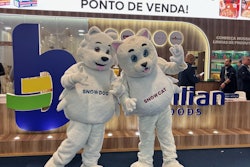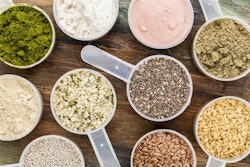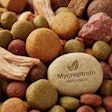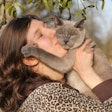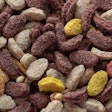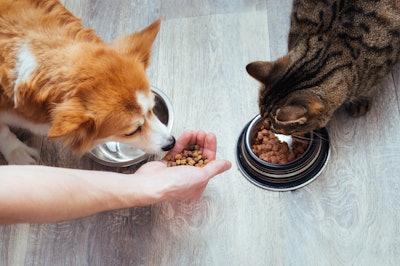
Recent data from Nextin Research by MarketPlace offers insights into U.S. pet ownership patterns and pet feeding habits. The findings come from the company's 2024 “Pet Category Trends” survey of 754 U.S. pet owners. Additional data from Packaged Facts shows broader market patterns.
Here are seven key findings from the research. While none are necessarily new to pet food companies, they confirm the growing influence of these trends.
1. Cat ownership rising as dog ownership stagnates
Cat ownership increased from 23% to 24% between 2018 and 2024, according to Packaged Facts data. Dog ownership dropped from 42% to 38% during the same period. Sole cat ownership grew from 11% to 12%, and households with cats but no dogs increased by 6 percentage points to 24% total.
2. Pet ownership demographics even by gender for dogs, nearly so for cats
Dog ownership is split between women (50%) and men (49%), according to the Nextin survey. Cat ownership skews slightly toward women at 54%, compared to 46% men. Cross-ownership is common: 43% of dog owners also own cats, while 57% of cat owners also own dogs.
3. Dry dog food still most popular format, but wet’s share is increasing
The Nextin survey shows 61% of U.S. dogs eat dry kibble and 31% eat wet food. The third most common food type is “food I make at home” at 16%, tied with fresh, commercially prepared dog food. Other formats including toppers and mixers account for 10%, while raw, air dried, freeze dried and frozen each fall under 10%.
4. Wet food more common for cats than dogs
While 65% of cats eat dry kibble, 71% eat wet food. Among wet food types, 40% of cat owners feed flaked varieties, 17% feed pate style and 14% feed semi-moist. As with dogs, 10% of cats receive toppers and mixers, while other alternative formats fall below 10% each.
5. Pet owners research specific ingredients
The most researched ingredients in the 12 months preceding the survey were probiotics (32%), CBD and hemp (22%), prebiotics (17%), mushrooms (13%), ashwagandha (11%) and postbiotics (8%). These align with ingredients pet owners consider to have health benefits: probiotics (32%), prebiotics (19%), postbiotics (6%), CBD (8%) and hemp (5%).
6. Functional ingredients show high health perceptions
Ingredients with perceived health benefits include vitamin D (37%), omega 3 and 6 fatty acids (35%), fish oil (34%) and antioxidants (27%). Other ingredients on the list include glucosamine, vitamin B complex, zinc, collagen, chondroitin, spirulina, fermented yeast and marine algae. Dietary fiber had the most positive perceptions among surveyed pet owners.
7. Health-related purchasing drivers differ between dogs and cats
For dogs, the top health-focused purchasing drivers are skin and coat (30%), joint health (27%), daily wellness (24%), digestion (22%) and gut health (19%). For cats, “none of the above” ranked highest at 24%. When cat owners do select health benefits, they choose digestion (22%), skin and coat (20%), daily wellness (19%), urinary and kidney (16%), and joint health and immunity (both at 15%).



